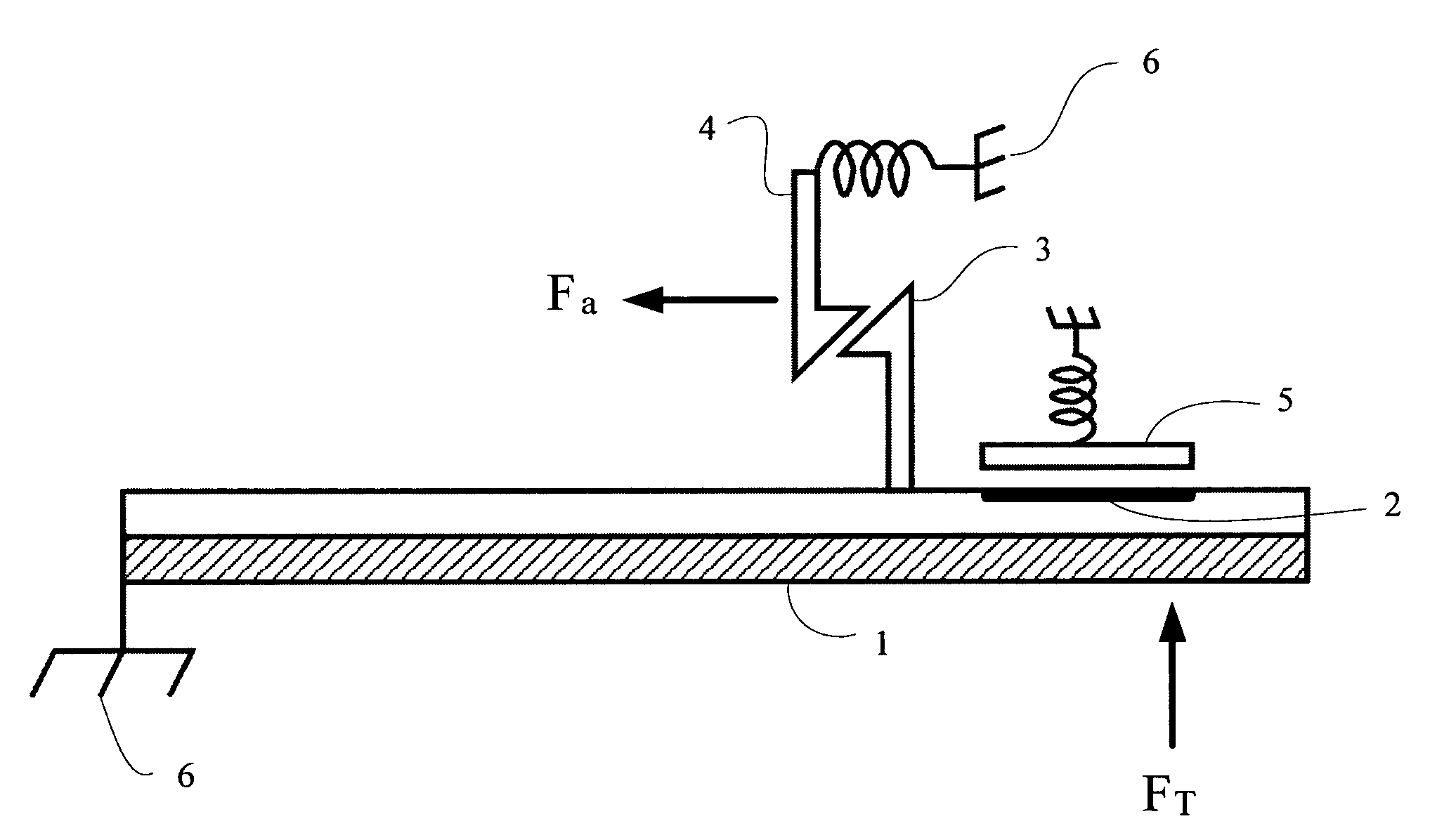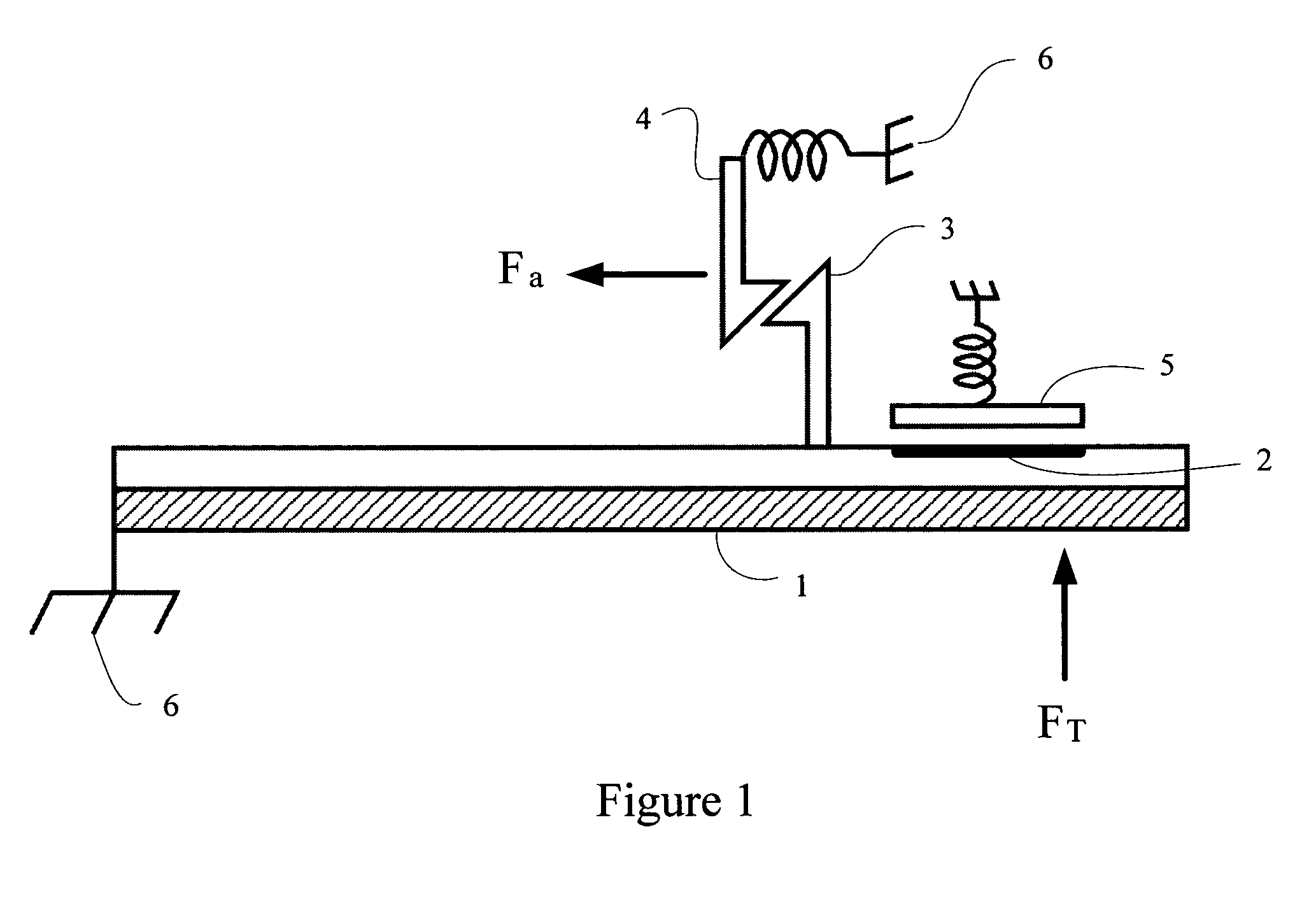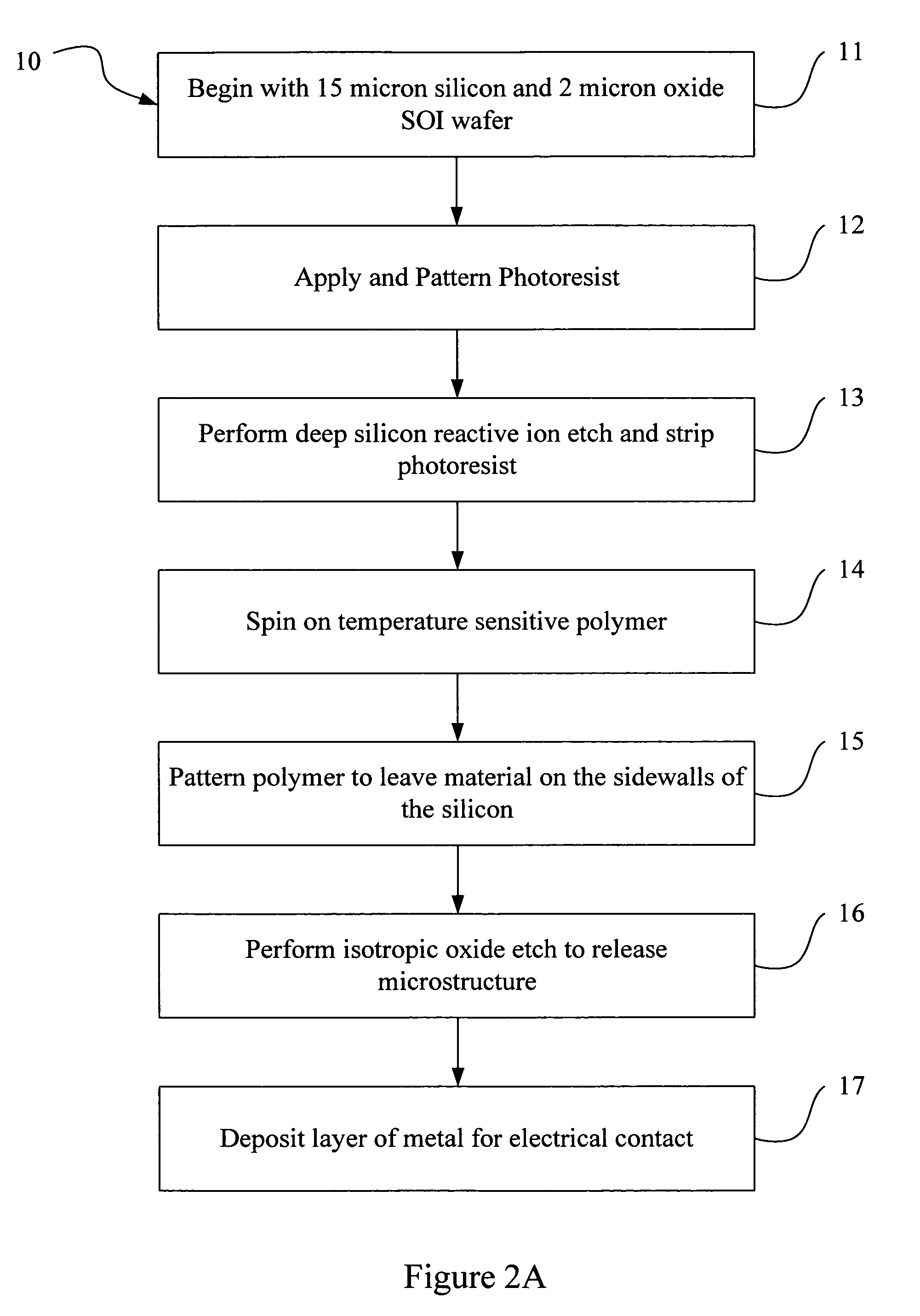Resettable latching MEMS temperature sensor apparatus and method
a technology of temperature sensor and latching device, which is applied in the direction of relay, protective switch details, generator/motor, etc., can solve the problems of low power and unpowered temperature sensor currently, not in a form factor suitable for integration with microdevices, and not manufactured using techniques that are compatible with microelectronics or micro-electromechanical systems
- Summary
- Abstract
- Description
- Claims
- Application Information
AI Technical Summary
Benefits of technology
Problems solved by technology
Method used
Image
Examples
Embodiment Construction
[0033]The illustrated embodiment of the invention is fabricated in a thick layer of silicon or other conductor material. Within this thick layer of material, a thermal bimorph, a set of flexures, multiple contacts, multiple latch and pawl structures, multiple actuators, and multiple anchors and pads are fabricated. The thermal bimorph consists of a cantilever beam made from the conductor material and a sidewall coating of a different material with a coefficient of thermal expansion mismatch to the conductor material. Upon application of a temperature load, the thermal bimorph will bend so that the free end moves in a lateral direction (i.e., in a direction parallel to the substrate).
[0034]FIG. 1 illustrates a schematic diagram of one embodiment of the invention. The invention utilizes a micromachined cantilever bimorph structure 1 attached to the substrate (not illustrated) via anchors 6. The bimorph structure 1 includes a contact area 2 and a latch 3. Under a temperature load, T, t...
PUM
 Login to View More
Login to View More Abstract
Description
Claims
Application Information
 Login to View More
Login to View More - R&D
- Intellectual Property
- Life Sciences
- Materials
- Tech Scout
- Unparalleled Data Quality
- Higher Quality Content
- 60% Fewer Hallucinations
Browse by: Latest US Patents, China's latest patents, Technical Efficacy Thesaurus, Application Domain, Technology Topic, Popular Technical Reports.
© 2025 PatSnap. All rights reserved.Legal|Privacy policy|Modern Slavery Act Transparency Statement|Sitemap|About US| Contact US: help@patsnap.com



